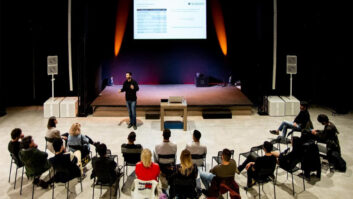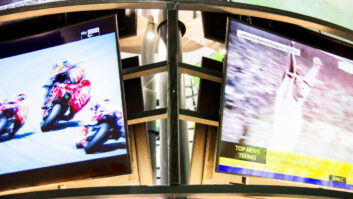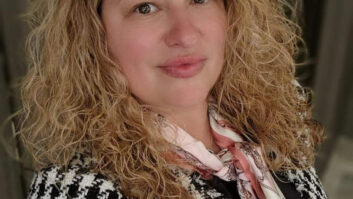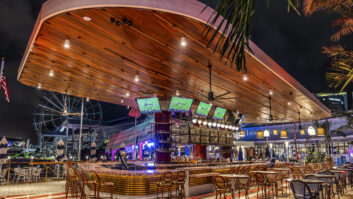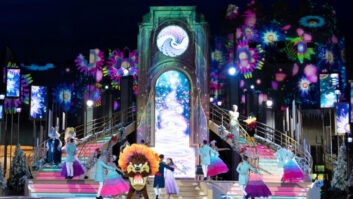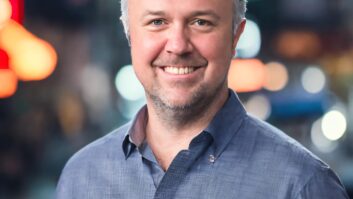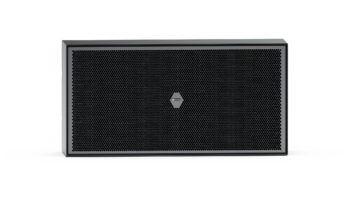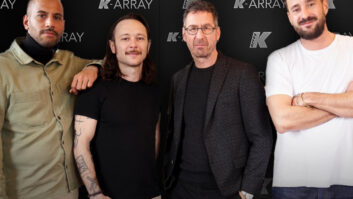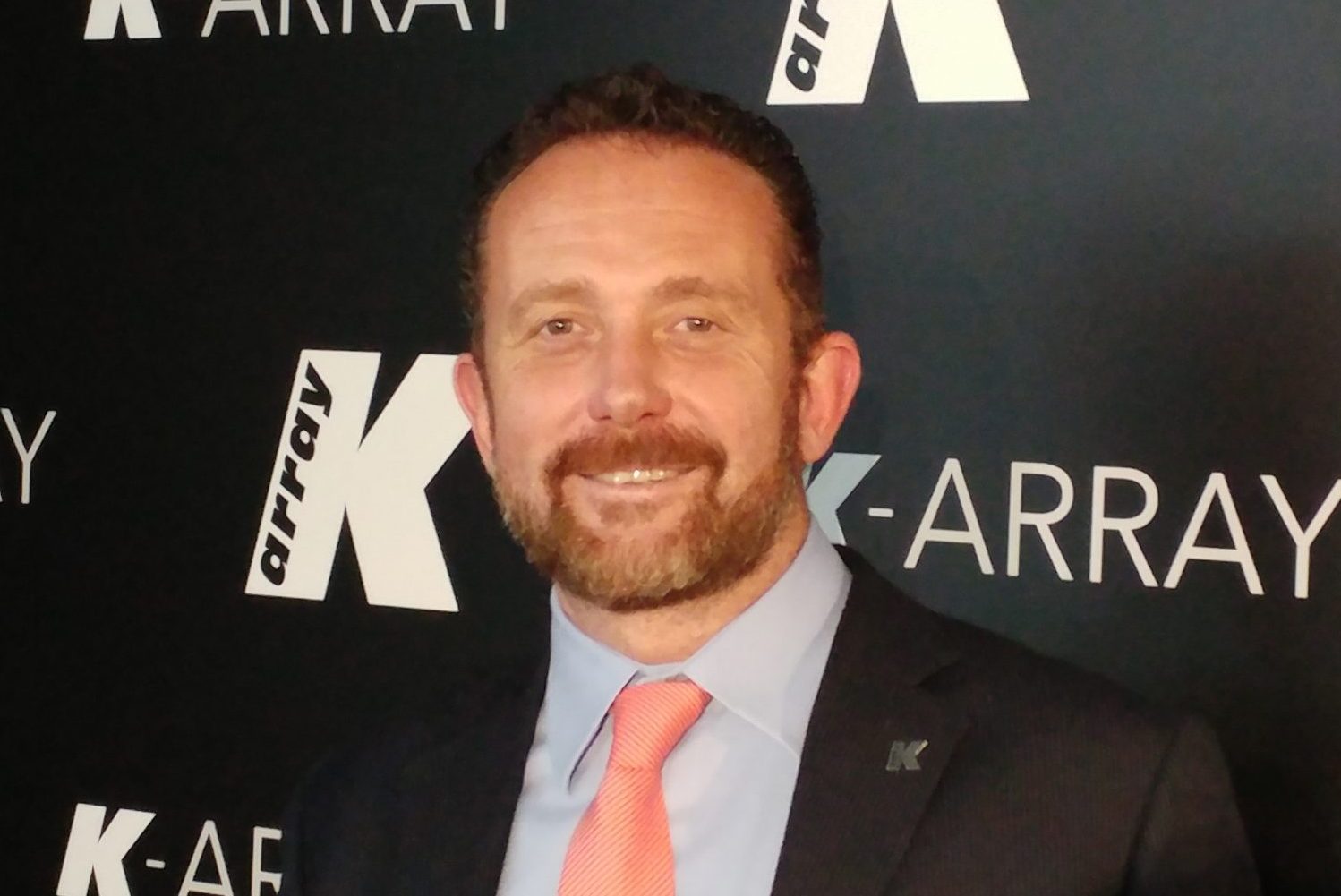
Since the company’s distinctively designed flat panel array speakers were first released just over a decade ago, K-array has been known for taking a different approach to loudspeaker design. Paddy Baker talked to its founder and president of R&D to talk about the company’s origins, its design philosophy and what makes it different from the rest.
As a loudspeaker manufacturer, K-array been in business since 2006, but the company was founded in 1990. At that time, says Alessandro Tatini (known as Alex), founder and president of R&D, “we were a small local rental company, doing some installation work, especially in churches and conference rooms.” There were three people in the Florence-based company then: Tatini, his father and Massimo Ferati (today, company president and CFO).
From the very beginning, the company designed and built some of its own products, including microphones and amplifiers. “Around 1994, an Italian pro audio company saw some of those products installed, and they asked us to produce those products with their brand,” explains Tatini.
That was the first step to becoming a manufacturer, although for the next few years, until around 2000, the company “did a lot of R&D for a lot of Italian and also foreign pro audio companies”. Around this time Tatini recruited two other people to the R&D team.
“Around 1996, 1997 we became more of a real production operation, and we started to do some production of mixers for an Italian brand, and some speakers and mics.” He investigated manufacturing in China for one of these brands – “so I went to China for quite a long period trying to select producers there.”
Another major milestone was in 2000 when the team started developing and manufacturing products for its own brand, XXL. “This was related mostly to the MI market, and had 90% of its turnover in Italy and a few per cent in other European countries.” They ran this for eight years before selling it to another Italian company.
Global market
In 2006, they decided to return to their roots in installed sound and rental, “and to try to design products that looked to a global market, not just to the Italian market”. The aim was to produce high-performing products at reasonable prices. “We were aware that you cannot produce cheap in Italy, there’s no way to do that – so we decided to focus on quality and innovation.”
K-array’s first major product was the original KH4, a the first slim array speaker, just 6in deep. Tatini says it acted as “a kind of calling card for us” for around ten years – production was only discontinued last year with the introduction of a new line.
In 2008 Sennheiser started distributing K-array “almost all around the world” – which Tatini describes as “a very profitable collaboration”. This continued up to a couple of years ago. Sennheiser decided not to distribute any more third-party brands, he says, but also “we saw that it no longer made sense to stay with them – what had been a kind of propeller on the rocket at the beginning had become a heavy weight.”
So after an amicable parting – “we kept a very nice relationship with the most part of the guys there, including the two Sennheiser brothers” – 60% of K-array’s turnover changed its distribution network in the space of two months. “The period 2015-16 was challenging for us on the sales side. But today the situation is really better, because we don’t have kind of just one big customer, but a lot of independent distributors, with whom we have individual relationships. We’re growing at almost at the same rate that we were accustomed to when we started with Sennheiser, so we are really happy.”
Fixing something
How did the flat panel array come about? There was a need for innovation at that time, says Tatini. “The market was full of regular standard line arrays. That doesn’t mean bad quality, but the approach was almost the same for all the brands. We understood that for there to be another one like that couldn’t make any sense.” The market only needed another product if “it could fix something relevant out there”.
They still had strong connections to the rental market, and so talked to sound engineers and PA engineers about any needs and so on, trying to understand which of their needs had not been met.
“We learned that the weight and size of a line array element were really critical in a lot of applications. We understood that focusing the energy towards the audience was already a need, but at that time it was not that easy to do it electronically. We decided to approach it in a different way from other companies that were
creating a cardioid pattern using a back speaker and DSP processing” – because that approach adds complexity and cost. “We decided to try to find a way to find a way to use the back energy produced by the main speaker itself. Being out of phase can create a cancellation in the area you need. So we started to play with the shape, and with sound-absorbing material, and we created a kind of a natural cardioid element.
“It’s still a challenge today to be in the first league of touring systems because it’s rider-oriented, but already at that time we were being compared to first-class systems: in performance, we were up there, and with half the normal weight and size.”
“And with Sennheiser we understood that we were unique, our uniqueness was really a jewel, especially in the installation field. So the idea of reducing the size of the product and keeping the performance up there was something that was great for architects and designers, so we decided to focus our attention there. That’s why for almost ten years we didn’t create any other product for the live sound market, for concert applications. Three years ago we decided to restart the design of the new line of line arrays.”
Other line array companies must have had the similar conversations with customers about weight and size, but no-one else came up with what K-array produced. Can he think why that should be?
“There’s a choice I believe that needed to be made, and nobody took the courage to make it,” he says. A flat array element can’t produce frequencies as low as a conventional cabinet. “Our line array modules cannot go down to 60Hz just like many others do – normally, depending on the dimension of the array module, we go down to 80 or 120Hz, something like that.” Passing these frequencies to the subwoofer “in our opinion is a great advantage because when you have these lower frequencies on the main clusters, you have two cylinders spreading energy on the stage where you do not really need it.”
With K-array’s approach, by contrast, “you have no combing issues at 80Hz, and it doesn’t create any lobing in the venue”.
Developments
We’re talking at Prolight + Sound, where the company is showing many of its new and current products. For the installed market, these include the Anakonda flexible array speaker, which is presented in an appropriately snakelike form at the front of the stand; the small Kobra and the tiny Lyzard line array elements; and Domino compact full-range speakers. K-array’s latest offering for the live market is the Mastiff stage monitor, and it also has a number of portable systems.
So what are the priorities now in terms of product development? “Oh my god – we have many developments!” he laughs. “We are working in a lot of directions, both for installations and for live sound. We renewed the whole line two years ago, and this year we completely redid the stage monitors, but there is still something cool that we are working on for the live market.
For installation, “every day there’s something starting to be developed. I believe in R&D we are working on 12 or 13 projects in parallel. Some of them are in the research period; some of them are really in between; and a few of them are in the development period, where we are working on the industrialisation of the project.”
Part of the research effort includes “something a bit crazy, as usual. Maybe it will come to something in a few years. From all this kind of crazy stuff, about 10% becomes a product. Some of it never sees the light of day.”
We talk a little of other developments in speaker technology and materials. “In terms of materials we are continuously searching, not only for the transducers, but also for the chassis,” he says. “I think we are almost unique in the market in using stainless steel as a structure.”
“We use aluminium, not only because we like to play with expensive materials, but because it’s a perfect heatsink. The box itself becomes the heatsink of the loudspeaker. In the design, the magnets are in contact with the frame – there’s a special part to transfer the heat.”
Regarding transducers, “there’s a common idea that a speaker is a speaker and everything that’s possible has already been done. That’s not exactly what we feel, honestly.” Overall, he says, there is no single secret to K-array’s speaker designs, “but maybe there are 10 secrets, and each one increases the performance by 1dB and adds half an octave to the range”.
He agrees that software is becoming more and more important in loudspeaker development, although he admits that “it’s something I’m not that deeply into. But I love to speak with the ‘nerd guys’ in the R&D department developing firmware and software – I love their language, though I understand just a little.
“Compared to ten years ago we are putting much more effort in that direction. Today it’s an important element of the R&D.”
Looking ahead
Can he look into a crystal ball and say anything about either how K-array will be in, say five years’ time? He explains that the company generally creates a “a three-year programme and a five-year dream, so I roughly know where we want to go.” While some details must remain confidential, he drops an intriguing hint: “We will move a bit along paths that are normally not ours, but we are looking at strongly. We will evolve as a company and as a manufacturer.”
And will K-array will still be as different from the competition as it is now? “Yes, I can say that at least for the ‘dreaming period’, the next five years, that’s still the idea. It’s in our DNA. There’s a saying: ‘It’s hard to get an artichoke from an apple tree’ – there’s no way it can happen. I believe also it’s the key to our small success, so we need to stay focused on that.”
